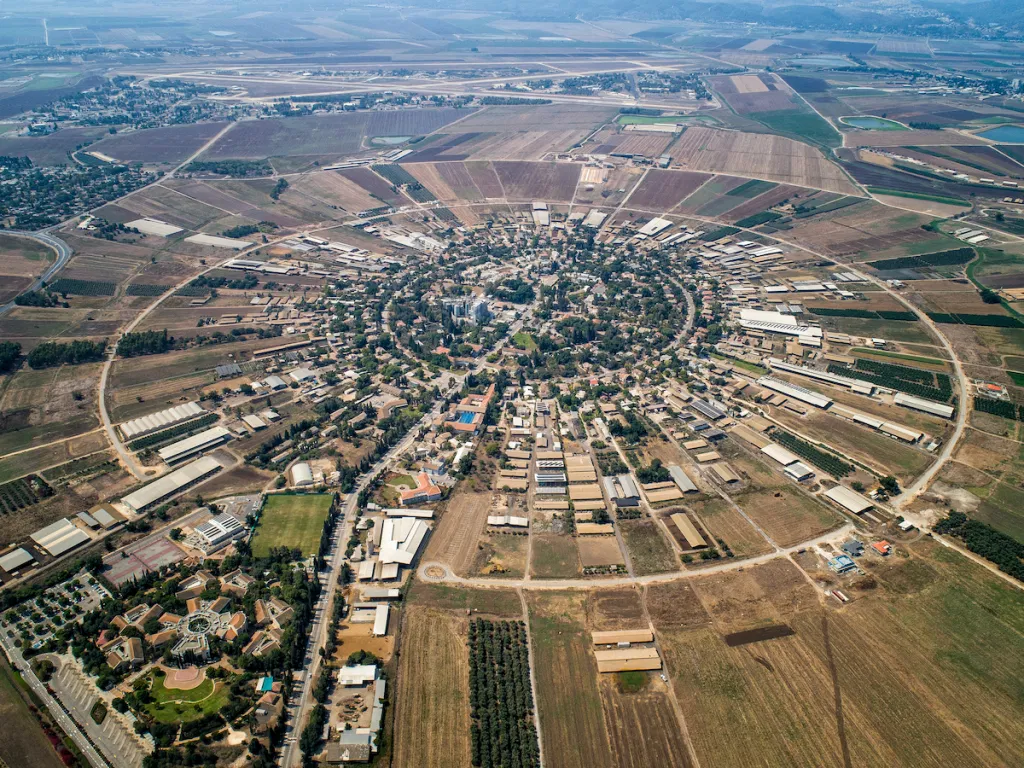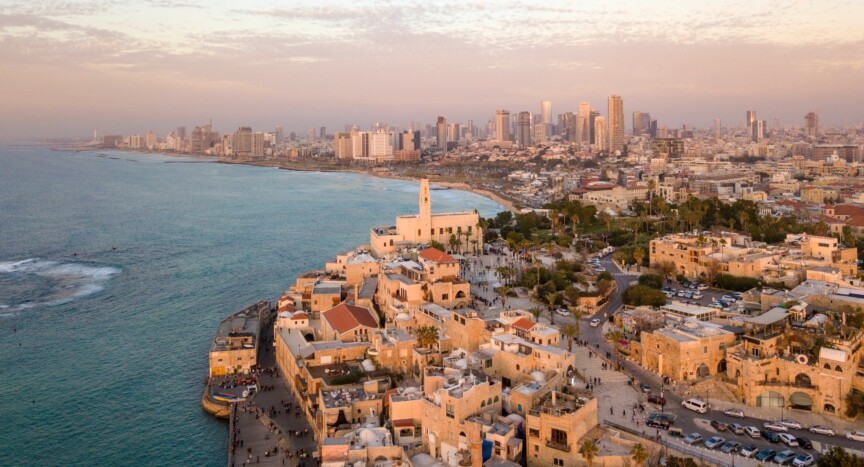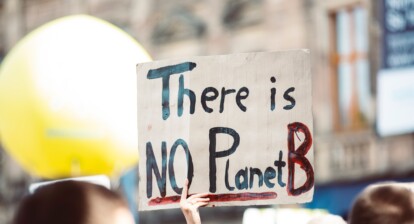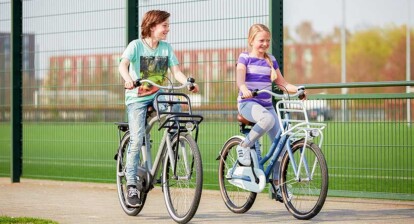Have you ever thought about how the neighborhood you live in affects your life? In the social sciences, sociologists have been dealing with this question for a long time.
Already in the 1970s researchers found that when people like their neighborhood, then they also evaluate their lives more positively and have a higher quality of life. [1] Unfortunately this connection also exists in reverse. For example, neighborhood disorders such as crime, stench, public drinking, etc. have a negative impact on the well-being of the residents. [2]
In a way, this almost feels like common sense: I only need to imagine that dubious people and shady businesses are on my doorstep to have an unpleasant feeling creep down my spine.
However, in research on well-being and living environment, scholars usually differentiate between two dimensions of well-being – the hedonistic and the eudaemonic dimension [3]. First, people who live in a neighborhood with high disorder experience less joy and rate their lives as being generally worse. Thus, they experience fewer positive emotions and report lower levels of happiness. Secondly, they also experience less personal growth, have less control over relationships and the environment, and less meaning in life. [2] This is fundamentally different from the first dimension as it does not concern direct measurements of happiness but rather the lived life as a “life of virtue in pursuit of human excellence.” [4] It concerns if one can achieve set goals: it is about personal development and self-realization. Thus, we should not underestimate the impact the place where we choose to live has on our life.
For many, the question of where to live is not only a question of place but also of how the neighborhood, or more concretely the community, is organized.
Let’s have a look at Israel. After the first Jewish settlers arrived in the land of Palestine people were looking for a different way to organize life. Later on, also influenced by the trauma the Holocaust had caused, the answer to how neighborhoods should be organized lay, for more and more people, on the aspect of togetherness. Kibbutzim (plural for kibbutz which is Hebrew for “communal settlement”) are a utopian attempt to create a commune in which everybody is equal, dedicating life to the community, but also democratically deciding over the commune’s fate. [5,6]

The communal settings host a simple, basic lifestyle that “encourage[s] the realization of the full potentialities of human nature.”[7] The logic follows the principle of voluntary simplicity: That is only if materialistic goods and values are not distracting then one can seek personal growth. [8] Hence, residents of the kibbutz were reducing commercial consumption to a minimum to ultimately have more time to pursue life goals that are non-materialistic. In other words, the kibbutz was constructed to maximize eudaemonic (internal-external cohesive) well-being, to maximize self-realization, personal growth, and meaning in life.
Nevertheless, life in the kibbutz has drastically changed in the last decades. In the beginning, kibbutzim were marked by a socialist way of life and equality was written in capital letters. The community came before the individual. Everyone worked within the kibbutz (often on a fruit plantation), no one possessed their own money or personal belongings. Everything was provided by the kibbutz. The basic rule was “to each according to his needs, from each according to his means.” [9] Today, most kibbutzim are not that harsh anymore, and allow privatized goods. Families own the houses they live in, have their own money and clothes, and often times also work outside the kibbutz. Today, the individual comes before the community. Nevertheless, the community aspect remains.
Not so long ago, I was in Israel myself and visited a kibbutz close to Tel Aviv. When I arrived in the morning at this beautiful, green oasis, I saw the residents coming together at the community café, enjoying the start of the day collectively. A woman in her 50s, who grew up in this exact kibbutz, showed me around and explained to me the kibbutz way of life. The tour was opening my eyes, as for the first time I understood that this utopian lifestyle of maximized eudaemonic well-being came with a price to pay.
One example for this is how the kibbutz used to structure family life. To understand it, I should start with a small detour to the 1960s and 1970s. At that time, the model of the nuclear family, a family consisting only of parents and children, was under attack as it was accused of limiting humans (women especially) in their potential achievements, and restricting people sexually. [10] It is also a concept in which women perform reproductive tasks in the home and in caregiving, and men perform productive work outside the family. However, since the equality of all members is the main characteristic of the kibbutz, the communities established not only common kitchen, dining and laundry rooms, but also children’s houses, where children grow up under the supervision of a trained adult who raises the children of the community. [10] Thus, children in the kibbutz did not grow up or sleep with their siblings and at their parent’s homes, but spent their lives in communal houses being raised by someone who was not their parent and did not try to be. [11] Today, these regulations have been abandoned, though the impact it has had on people’s lives are still noticeable.
The same happened to the lady I met in the kibbutz. Born in the 1960s, she was taken away from her mother after she was born, and brought to the kindergarten of the kibbutz where she spent the next few years of her childhood. Afterwards, she moved a couple of houses further to where the school was. She told me that the brave kids would sneak out after bedtime to run to the parents’ house and crawl into their beds. But often times the children were either caught by the night watchman or brought back in the same night by their parents. Apart from the days after her birth, she never slept under the same roof as her parents. To this day, she has an extremely complicated relationship with her mother, and felt overwhelmed when she became a mother herself because she lacked a role model.
As the author Ronit Plank who also grew up in a kibbutz puts it:
“As someone who has fought hard to understand attachment and build connection, especially in my own life now that I’m a mother, I don’t think anything can ever replace the love and nurturing all children want from their parents, to feel they are the center of their caregiver’s world.” [12]
The kibbutz movement is backed up with utopian ideology and philosophical discourse. However, the urgent desire to establish utopia can become so great that sacrifices are made. In such moments, meaning is written larger than happiness. Then it is about more than just being well or living a simple life, it is to establish something meaningful.
However, as nowadays kibbutzim are less strict, privatized, and do not raise children in a communal way, they do have a lot to offer. Kibbutzim are more than a simple neighborhood, because they offer a communal experience, where life is lived together, marked by support and trust. After all, while sociologists in the United States have observed a decline in social interactions and networks of people, which he argues ultimately endangers the cohesion of American society [13], he at least does not need to have the same worries when it comes to kibbutzim in Israel.
References:
[1] Andrew, F. M., Whitey, S. B. (1976). Social Indicators of Well-Being: America’s Perception of Life Quality. New York: Plenum Press.
[2] Toma, A. Hamer, M. Shankar, A. (2015). Associations between neighborhood perceptions and mental well-being among older adults. Health & Place, 34, 46-53.
[3] Huta, V., Ryan, R.M. (2010). Pursuing Pleasure or Virtue: The Differential and Overlapping Well-Being Benefits of Hedonic and Eudaimonic Motives. J Happiness Stud 11, 735–762. https://doi.org/10.1007/s10902-009-9171-4
[4] Niemiec C.P. (2014) Eudaimonic Well-Being. In: Michalos A.C. (eds) Encyclopedia of Quality of Life and Well-Being Research. Springer, Dordrecht. https://doi.org/10.1007/978-94-007-0753-5_929
[5] Jewish Virtual Library. (n.d.). History and Overview of the Kibbutz Movement. Retrieved February 2022, from https://www.jewishvirtuallibrary.org/history-and-overview-of-the-kibbutz-movement
[6] Near, H. (2011). Where Community Happens: The Kibbutz and the Philosophy of Communalism. Peter Lang AG.
[7] Spiro, M. E. (2004). Utopia and its discontents: The kibbutz and its historical vicissitudes. American Antropologist, 106(3), 556-568 (p. 55).
[8] Alexander, S. (2011). The Voluntary Simplicity Movement: Reimanining the Good Life Beyond Consumer Culture. Retrieved 2022 from https://papers.ssrn.com/sol3/papers.cfm?abstract_id=1970056
[9] Reitan, A., Rubin, O. D. (2019). Privatization, demographic growth, and perceived sustainability: Lessons from the Israeli reniweing kibbutzim. Sustainable Development, 27(6), 1076-1084.
[10] Ben-Rafael, E., Weitman, S. (1984). The reconstitution of the family in the kibbutz. European Journal of Sociology, 25(1), 1-27.
[11] Lieblich, A. (2010). A century of childhood, parenting, and family life in the kibbutz. Journal of Israeli History, 29, 1-24.
[12] Plank, R. (2022). I grew up in a kibbutz in Israel, and I only got to see my parents a few hours a day. I wish they understood how much I needed them around. Insider. Retrieved 2022 from https://www.insider.com/growing-up-in-kibbutz-in-israel-affected-my-whole-life-2022-1
[13] Putnam, R. D. (2000). Bowling Alone: America’s Declining Social Capital. In: Crothers L., Lockhart C. (eds) Culture and Politics. Palgrave Macmillan, New York. https://doi.org/10.1007/978-1-349-62965-7_12







